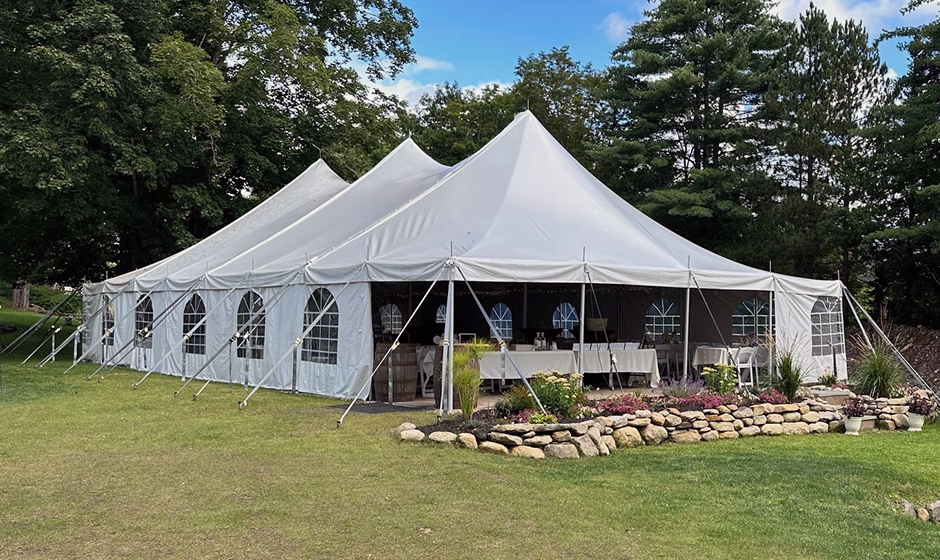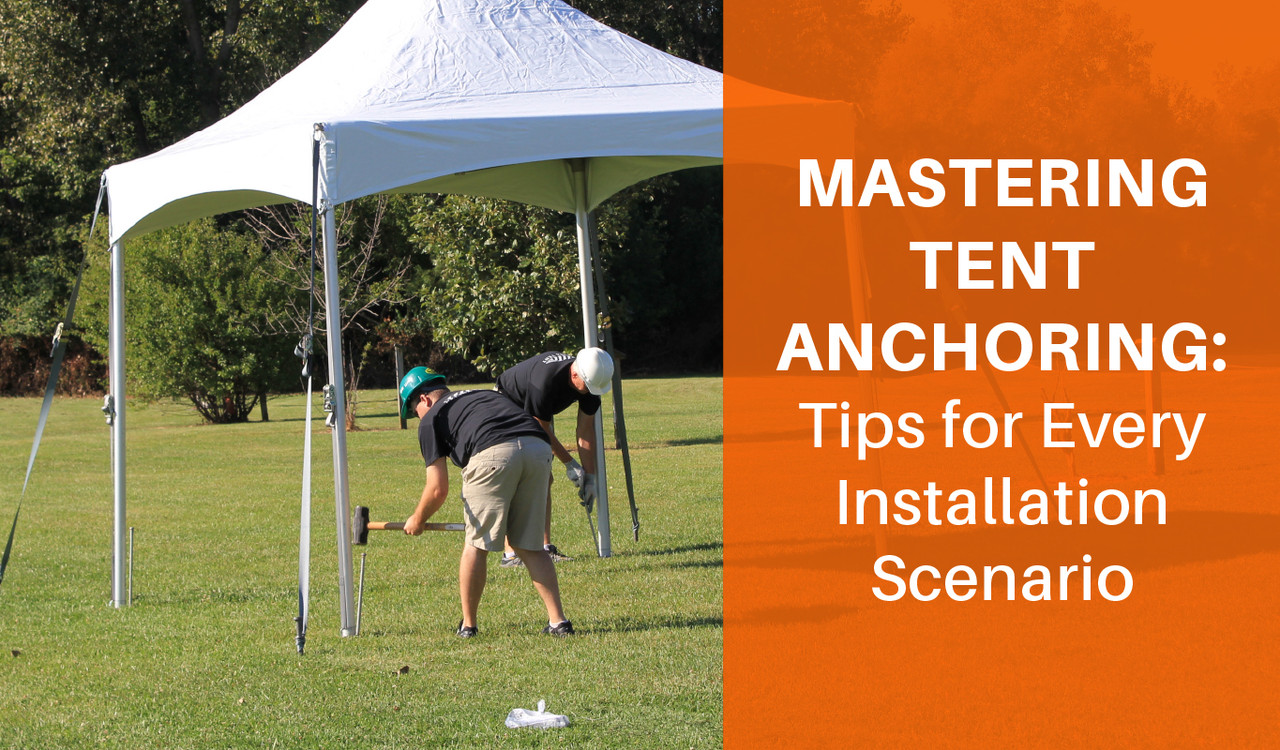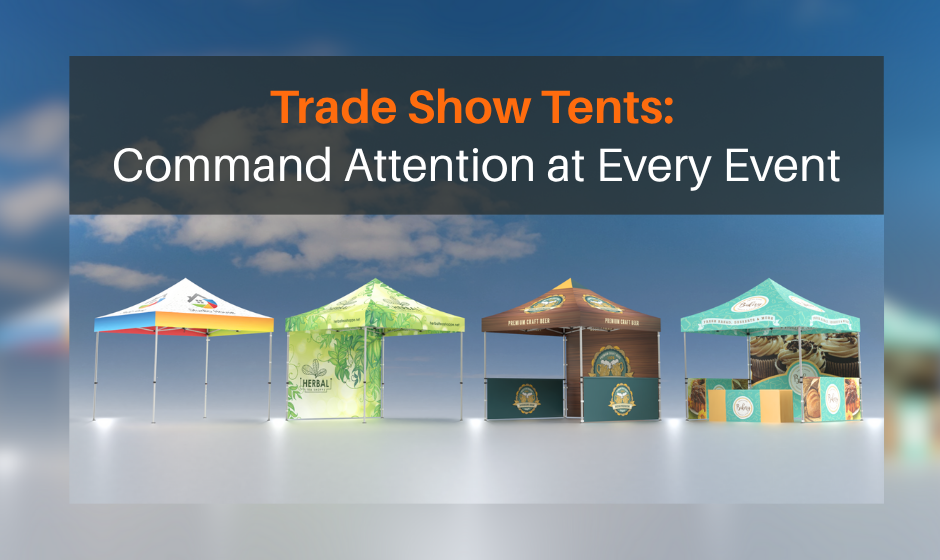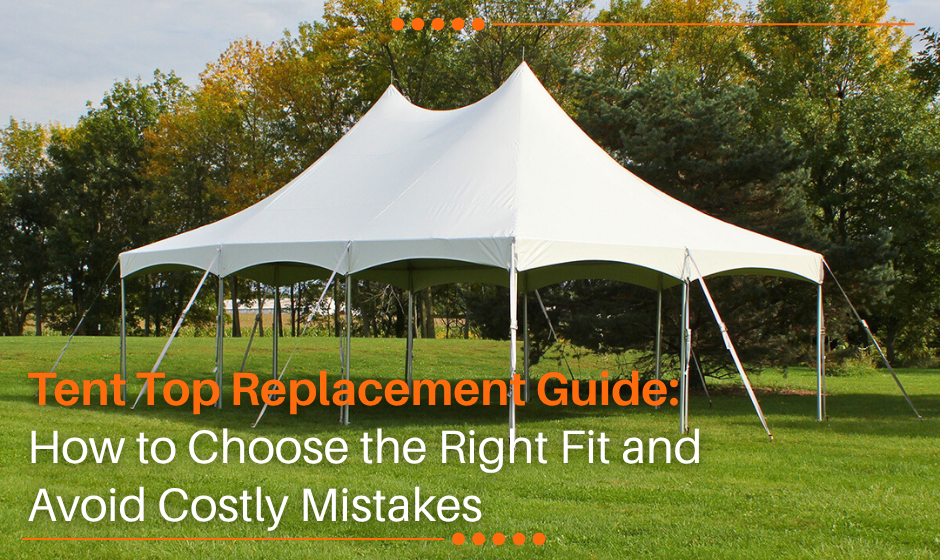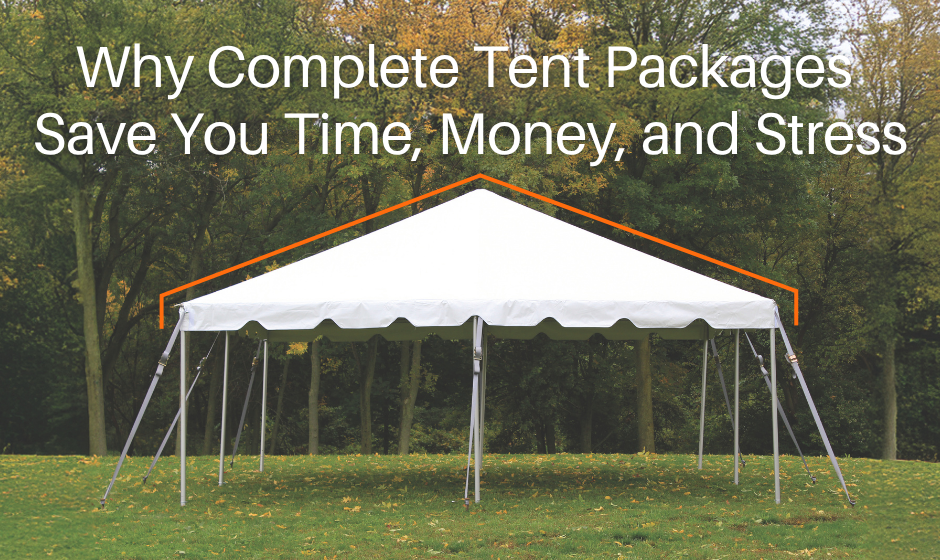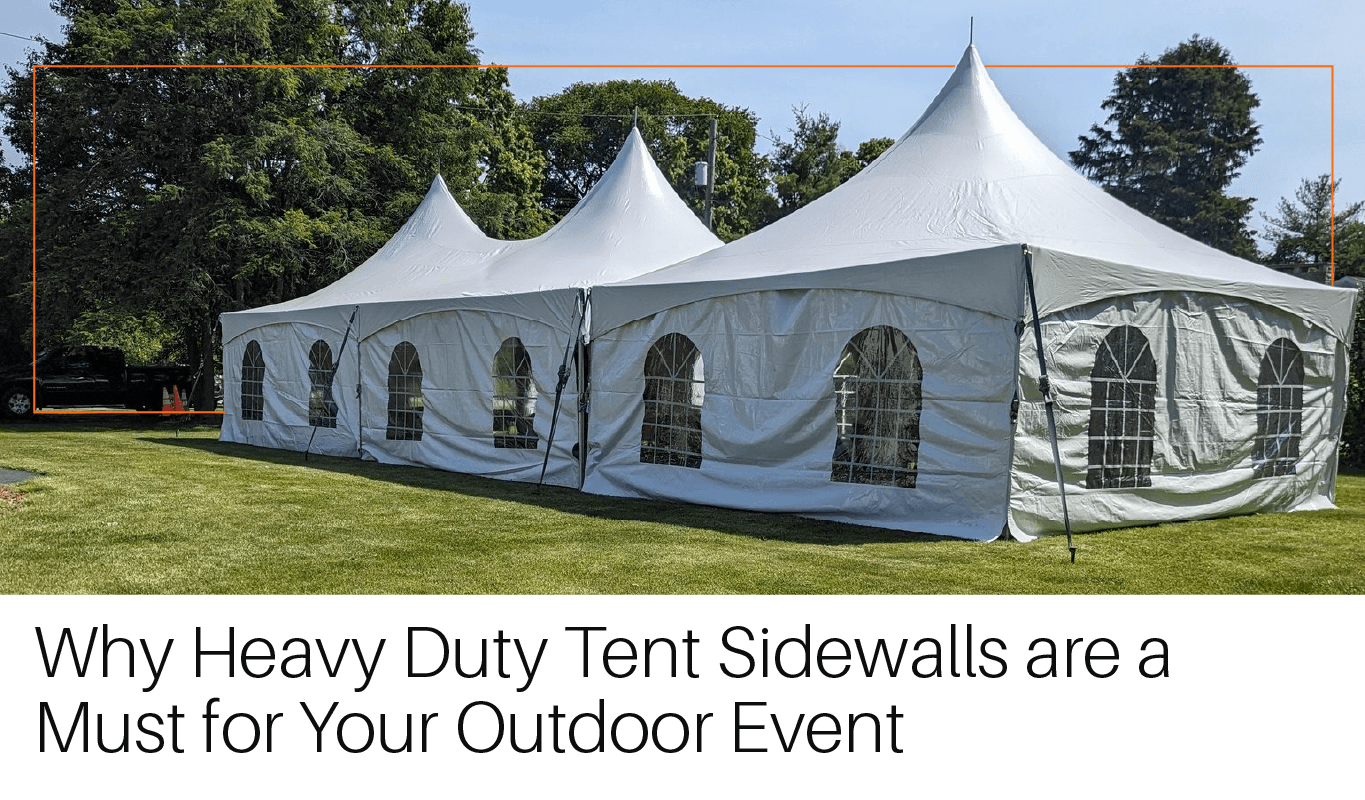Setting up a tent, whether for a backyard gathering or a large-scale event, requires a solid understanding of tent anchoring. The principles of securing a small tent mirror those for larger shelters, but the scale and forces involved grow exponentially with size. Anchoring systems must adapt to handle the increased stress from wind and fabric weight. Here's a comprehensive look at the tools and techniques that can make your tent installation secure and efficient.
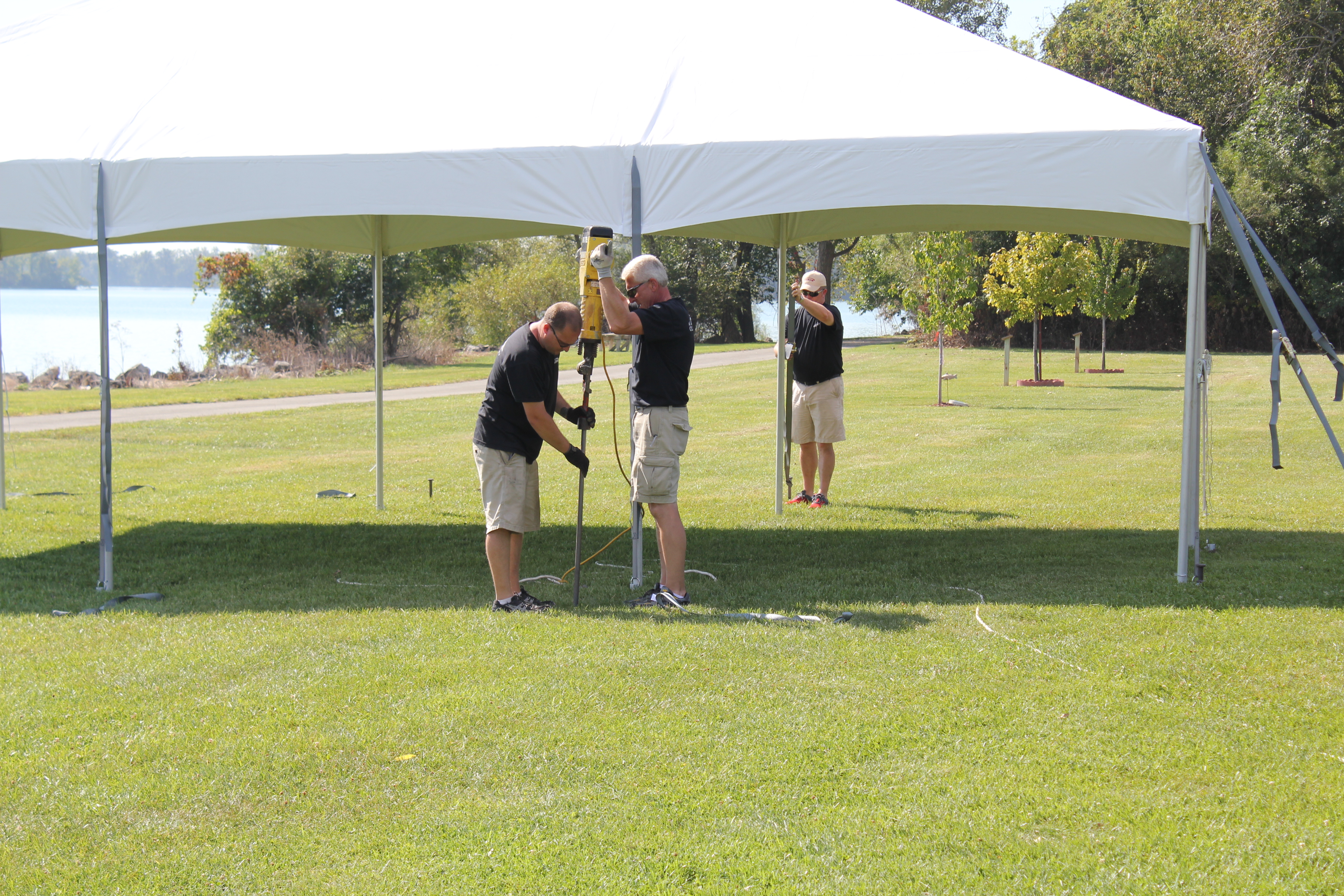
The Importance of Tent Anchoring
No matter the size or location, anchoring is the foundation of any successful tent installation. Without proper anchoring, tents can shift, collapse, or even become airborne in strong winds. This not only jeopardizes the safety of attendees but can also lead to costly damage. Anchoring ensures stability by countering forces such as wind pressure and the weight of the tent fabric. Whether you'resetting up in an open field, a backyard, or a paved urban environment, the right anchoring system is critical.
For smaller installations, standard stakes and ropes may suffice, but larger tents demand advanced solutions. As the size of the tent increases, so do the forces acting upon it. This requires specialized hardware and techniques to ensure the structure remains secure, regardless of environmental conditions.
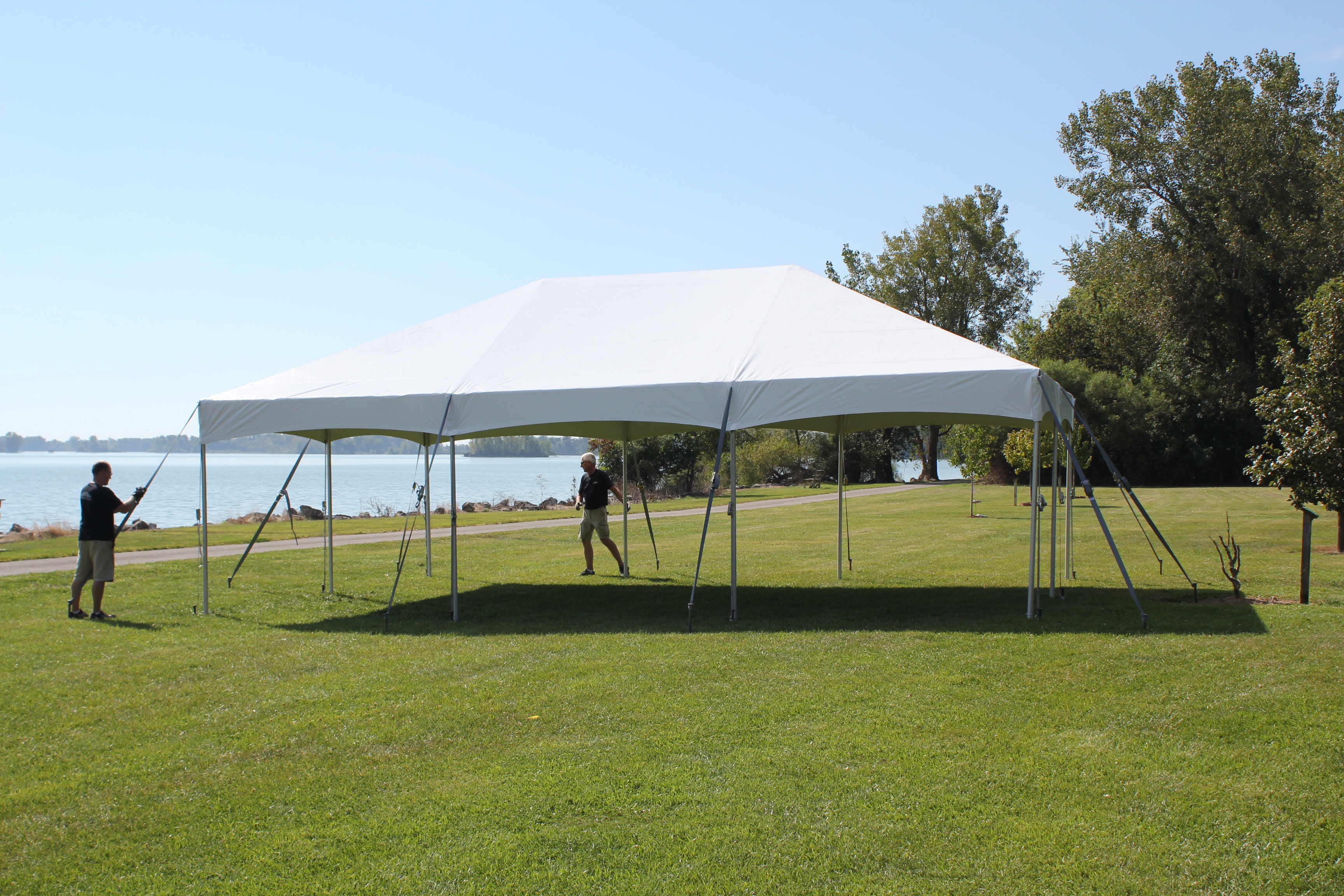
The Power of Ratchet Systems in Tent Anchoring
Ratchet buckles are a versatile and essential component in the tent anchoring toolkit. These mechanical devices allow you to create and control tension on a strap by simply manipulating the handle. Unlike traditional rope guy lines that require knot adjustments or uncertified tension bars, ratchets provide precise, incremental tensioning with minimal effort. This ease of use makes them a favorite among both amateur and professional tent installers.
Standard Ratchet Buckles
Standard ratchet buckles are typically attached to stakes via a strap. The installer uses the ratchet’s handle to tighten the strap, increasing tension and ensuring the tent’s stability. This method is ideal for medium-sized installations where precise tensioning is necessary but extreme forces are not a concern. Standard ratchets are particularly useful in situations where adjustments need to be made quickly, as they allow for easy loosening and re-tensioning without complicated knots.
Advanced Box Ratchets
For larger tents, such as the Premiere II or TP Series, box ratchets offer an advanced solution. Unlike standard ratchets that rely on straps, box ratchets feature a staking plate with a hole to combine the holding power of two stakes. This setup allows for greater stability and eliminates excess play during tightening. A wrench-operated lever system makes cranking high tension at the stake location safer and more efficient.
Box ratchets are particularly valuable for massive installations where wind and fabric weight create significant stress on the anchoring system. By concentrating the tension directly at the stake location, box ratchets minimize movement and provide unparalleled security. They’re also designed to handle extreme weather conditions, making them indispensable for large-scale outdoor events.
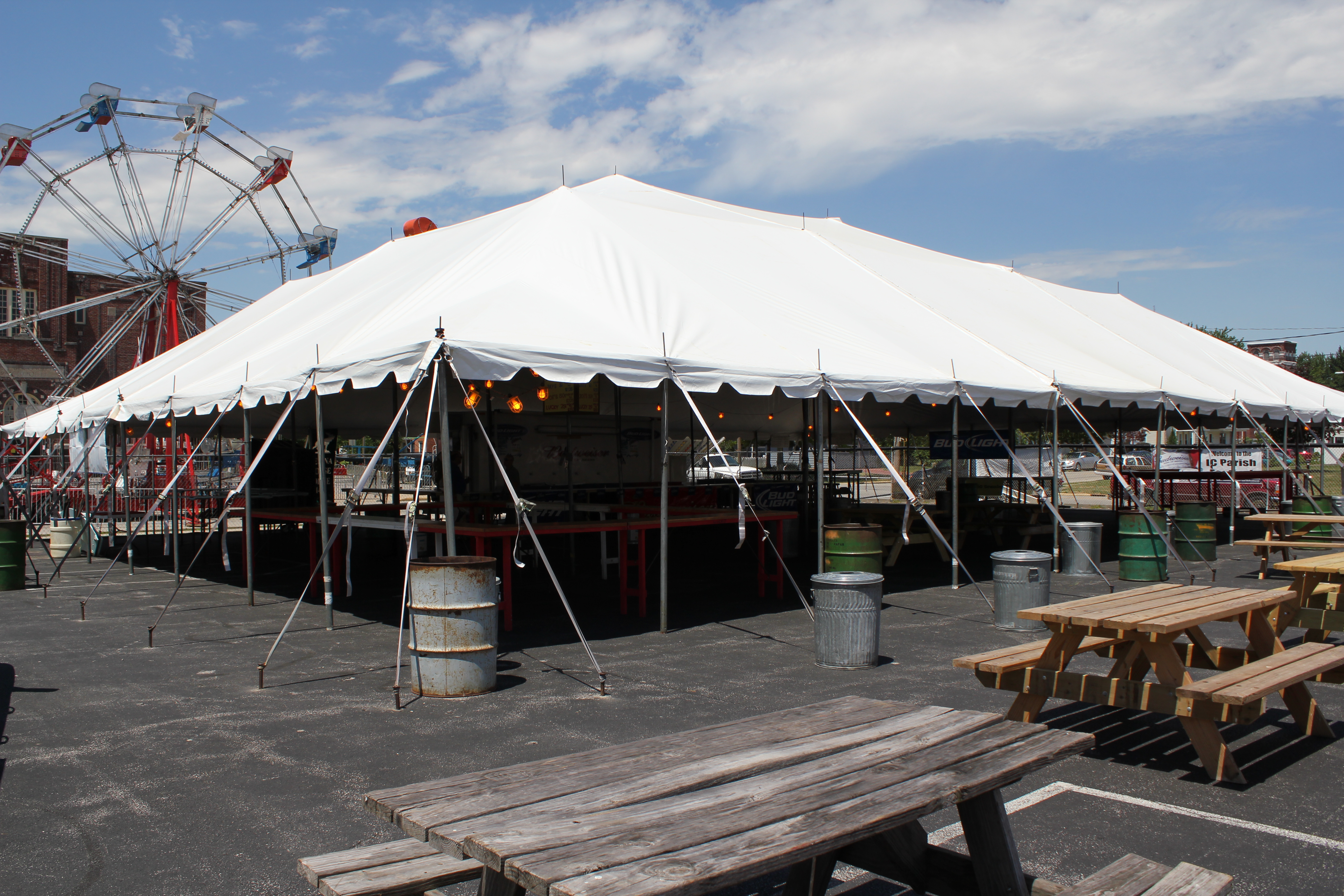
Challenges of Urban Tent Anchoring
When setting up tents on hard surfaces like parking lots, standard stakes and sledgehammers aren’t practical. Yet anchoring remains non-negotiable to ensure safety. Unfortunately, many installers turn to unsafe methods like water barrels, which pose significant risks. Despite their popularity, water barrels fail to provide the reliability needed for secure tent anchoring.
The Risks of Water Barrels
Water barrels are often used as an improvised anchoring solution, but they are far from ideal. The weight of the water may seem substantial, but it is rarely enough to counteract the forces exerted by large tents in windy conditions. Moreover, water barrels can shift or topple, creating additional hazards. For these reasons, professional installers strongly discourage their use.
Concrete Anchors: The Urban Solution
For urban environments, concrete anchors are the gold standard. These anchors are installed in two steps:
- Drilling the Holes: Using a drill bit, create ½-inch holes at the designated staking locations. Refer to your tent’s instruction manual or layout guide to ensure accuracy.
- Setting the Anchors: Insert the anchor into the hole and tighten the bolt. As the bolt is turned, the anchor’s spreading base grips the sides of the hole, creating a secure hold. The exposed bolt head functions like a standard stake, allowing ropes or ratchets to be attached.
Concrete anchors provide a reliable and professional-grade solution for installations on asphalt or cement. They ensure the tent remains stable, even in challenging conditions, and eliminate the risks associated with less secure methods.
Anchoring for Every Event
Whether you’re raising an 80-foot pole tent or a small frame tent, proper anchoring is crucial. Always adhere to the recommended staking and guy line requirements provided in your tent’s installation manual. For larger or more complex installations, investing in advanced anchoring systems like box ratchets or concrete anchors can provide the extra security needed to withstand challenging conditions.
Tips for Successful Tent Anchoring
- Understand Your Environment: Consider the surface type, wind conditions, and event size when choosing your anchoring method.
- Follow Manufacturer Guidelines: Every tent comes with specific instructions for staking and tensioning. Adhering to these guidelines ensures optimal performance and safety.
- Invest in Quality Equipment: High-quality ratchets, stakes, and anchors can make a significant difference in the stability and longevity of your tent.
- Perform Regular Inspections: Check all anchors and guy lines periodically, especially during multi-day events or in adverse weather conditions.
Why Tent Anchoring Matters
Every tent installation is unique, but one principle remains universal: proper anchoring is the foundation of safety and success. From ratchet systems to concrete anchors, choosing the right tools can save you time, effort, and potential mishaps. Plan ahead, equip yourself with the right anchoring gear, and enjoy the peace of mind that comes with a securely anchored tent.
Looking to upgrade your tent anchoring system or replace components? CELINA offers a range of products and expert advice to help you find the best solutions for your needs. Call us at (866) 438-8368 or email Sales@GetTent.com to speak with a representative.







